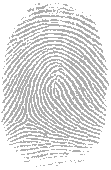|
Johannes Stark (April 15, 1874 - June 21, 1957)
was a prominent 20th century physicist, and a Physics Nobel Prize laureate.
Born in Schickenhof, Bavaria, Stark was educated at the Bayreuth Gymnasium (grammar school) and later in Regensburg. His collegiate education began at the University of Munich, where he studied physics, mathematics, chemistry, and crystallography. His tenure at that college began in 1894; he graduated in 1897, with his doctoral dissertation regarding some physics subjects of Isaac Newton.
He worked in various positions at the Physics Institute of his alma mater until 1900, when he became an unsalaried lecturer at the University of Göttingen. He worked and researched at physics departments of several universities, including the University of Greifswald, until 1922. In 1919, however, he won the Nobel Prize in Physics for his "discovery of the Doppler effect in canal rays and the splitting of spectral lines in electric fields" (the latter is known as the Stark effect). From 1933 until his retirement in 1939, Stark was elected President of the Physico-Technical Institute, while also President of the Deutsche Forschungsgemeinschaft.
Stark published more than 300 papers, mainly regarding electricity and other such topics. He received various awards including the Nobel Prize, the Baumgartner Prize of the Vienna Academy of Sciences (1910), the Vahlbruch Prize of the Göttingen Academy of Sciences (1914), and the Matteucci Medal of the Rome Academy. He married Luise Uepler, and they had five children.
During the Nazi regime he attempted to become the Fuhrer of German physics through the Deutsche Physik ("Aryan physics") movement (along with Philipp Lenard) against the "Jewish physics" of Albert Einstein and Werner Heisenberg.
From Wikipedia, the free encyclopedia.
|
